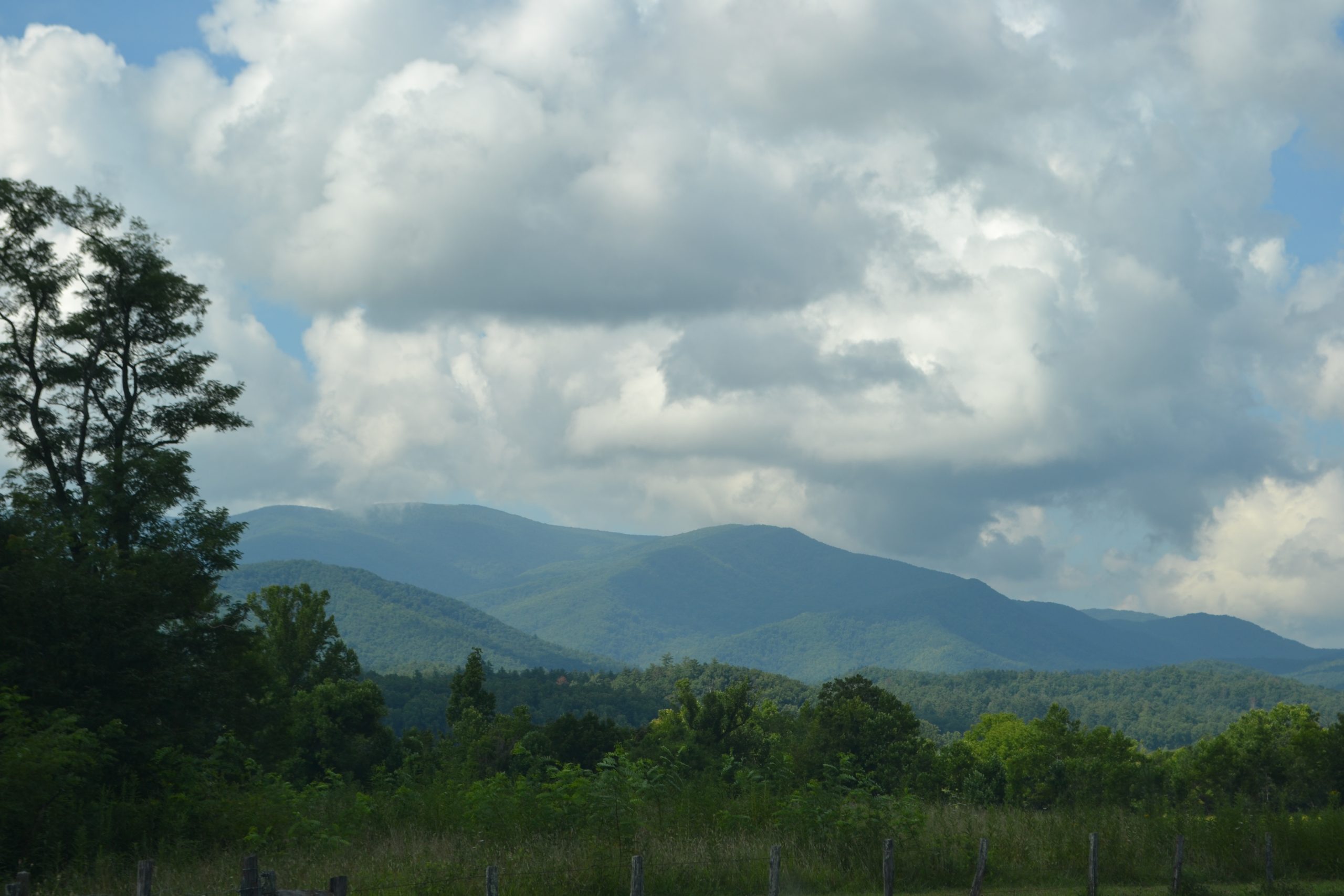
I found myself mesmerized by the playful shadows fading in and out upon the Smoky Mountains. Surrounded by clouds, the rolling hills were dense with firs and oaks, rising up in the distance from the valley of Cades Cove. I decided to take an early morning drive along the 11-mile loop, one way auto tour to visit this informative living history museum. Picking up the brochure, I began my adventure at the Orientation Shelter and followed the road heading west.
A cove is defined as a flat valley that exists between mountains or ridges. A perfect location for settlers coming from the east, Cade’s Cove provided the ideal terrain for farming and raising cattle. Today, there are over 80 structures that contribute to the historical perspective of life in the Great Smoky Mountains. Dating back to the early 19th century where the population totaled 685, these buildings include homesteads and outbuildings, churches, barns and an early grist mill.
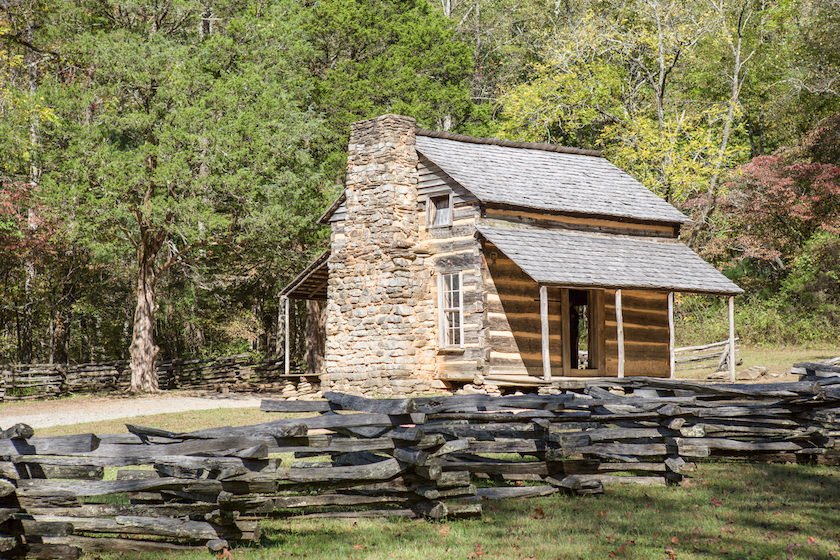
Dating back to the early 1820s, the John Oliver cabin is the oldest log home in Cades Cove and the first homestead on the tour. Made from trees within the vicinity, the home has an upper and lower level that housed their Cadlarge family.
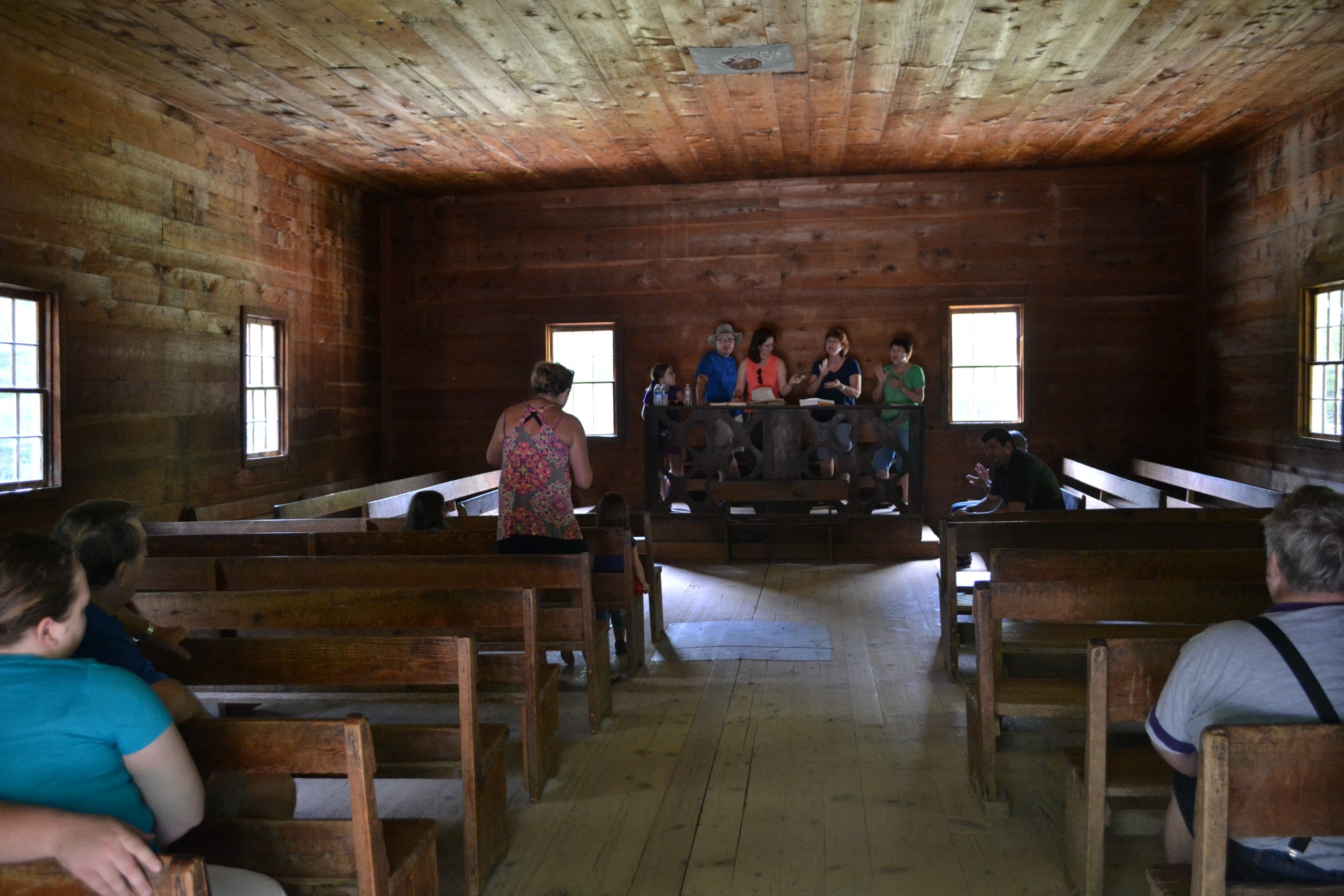
Organized in June of 1827, Cades Cove Primitive Baptist Church was the meeting place for early settlers until the time of the Civil War. Crossing into its entrance, there was a group of visitors singing hymns towards the front. Several pews were occupied with onlookers enjoying the entertainment. I took my place on one of the benches and closed my eyes for a moment to listen to the sweet sound echo off of the wooden logs.
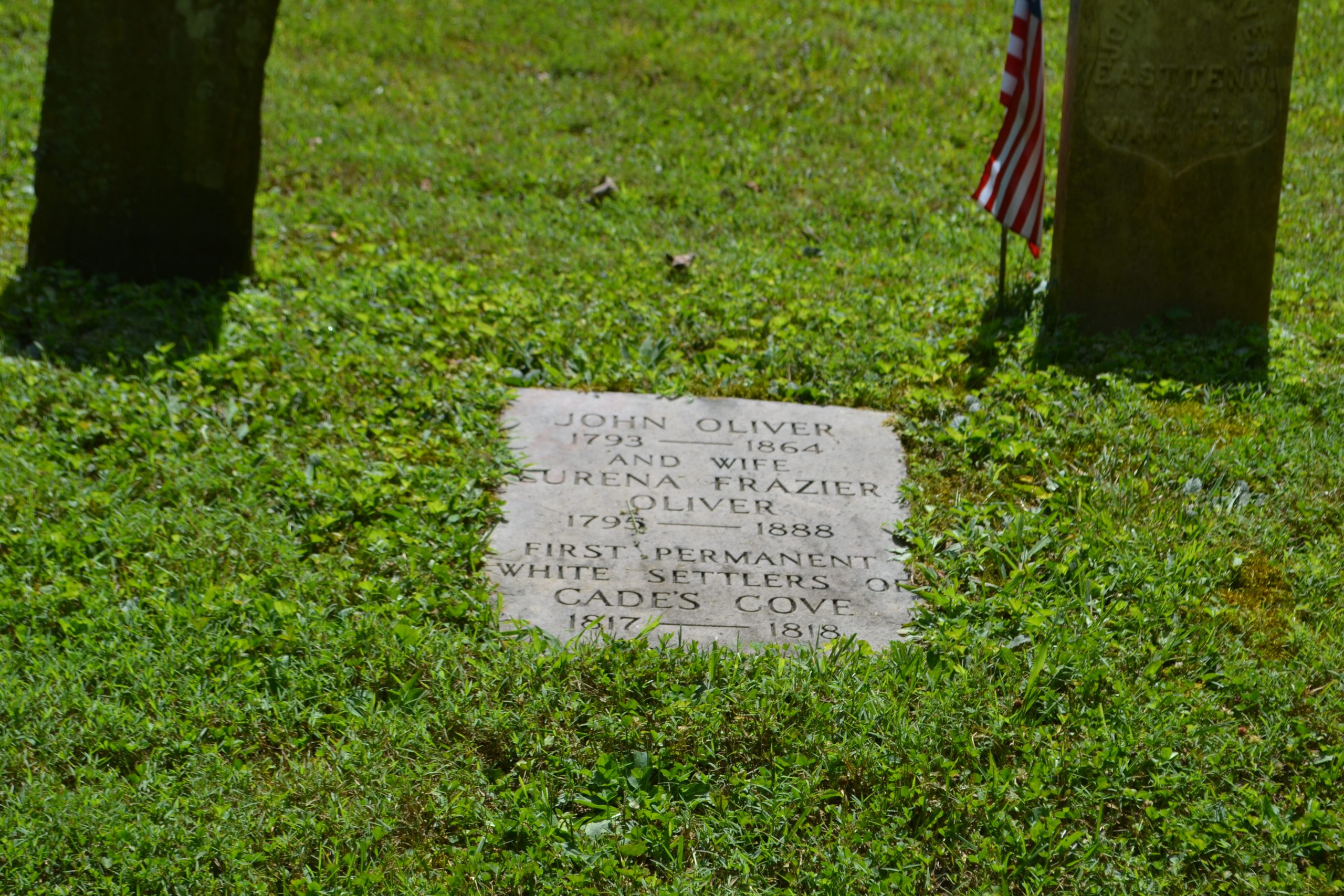
A quick stop at the Methodist Church provided me the opportunity to examine several epitaphs dating back to the late 1800s with names familiar to the area. It was here where I located the headstone of John Oliver and his wife Eurena Frazier Oliver who are noted as the first permanent white settlers of Cade’s Cove.
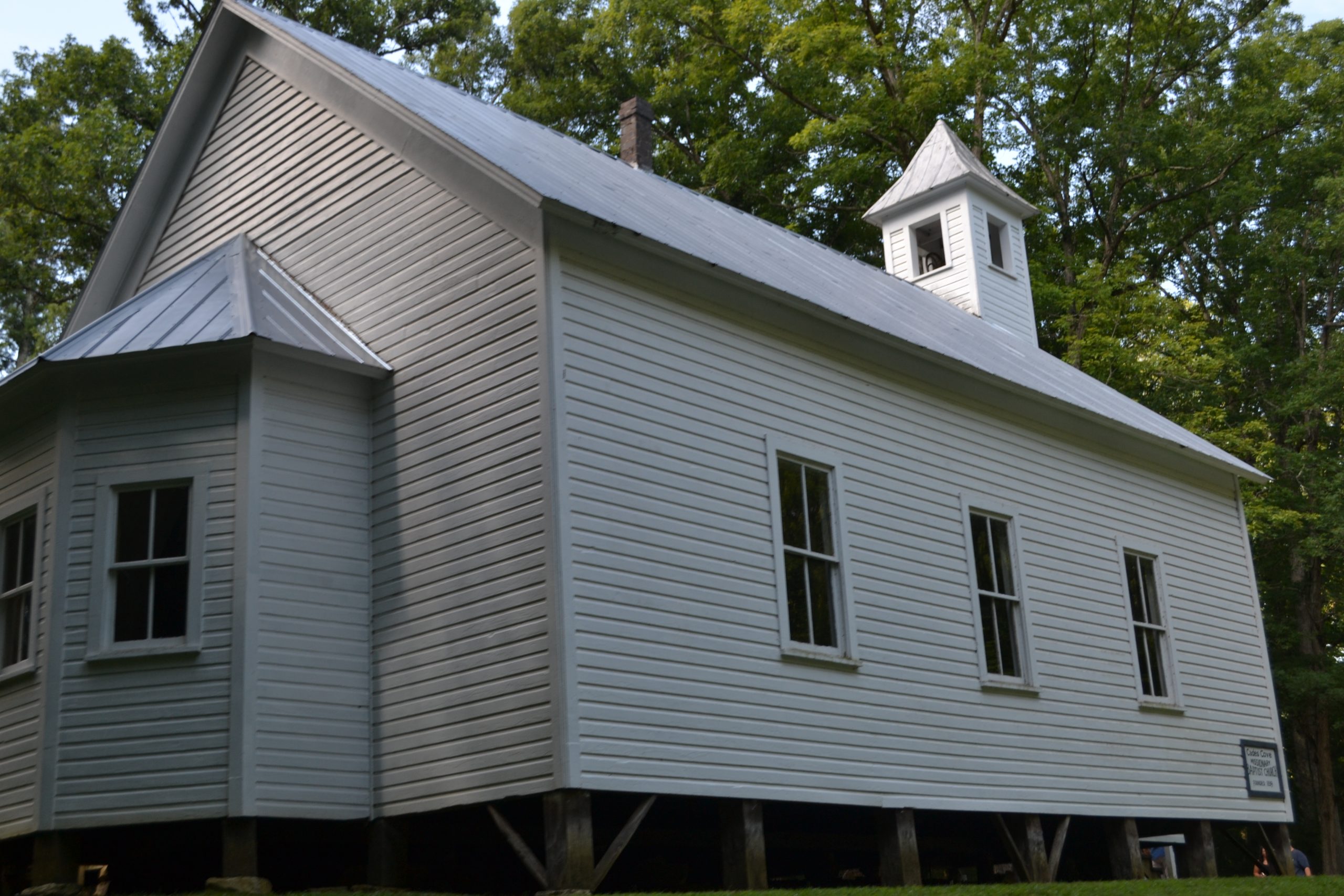
A group of Baptists that believed in the emphasis of Missionary work, started a church in 1839 called the Missionary Baptist Church. The congregation shut its doors in 1944.
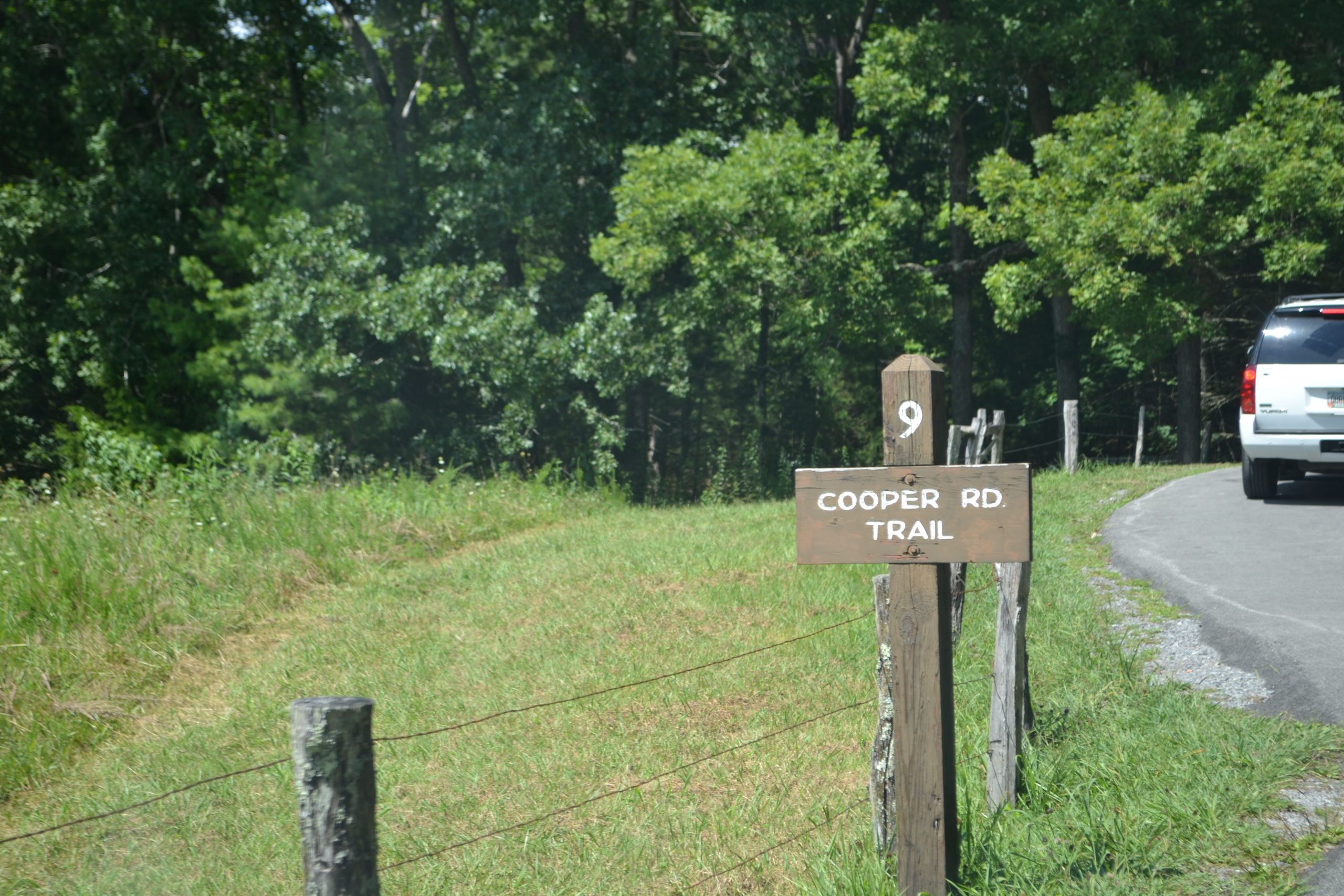
Once an Indian trail, Cooper Road Trail is a popular hiking path for visitors to Cade’s Cove. Named after Joe Cooper, the road was a direct route to nearby Marysville.
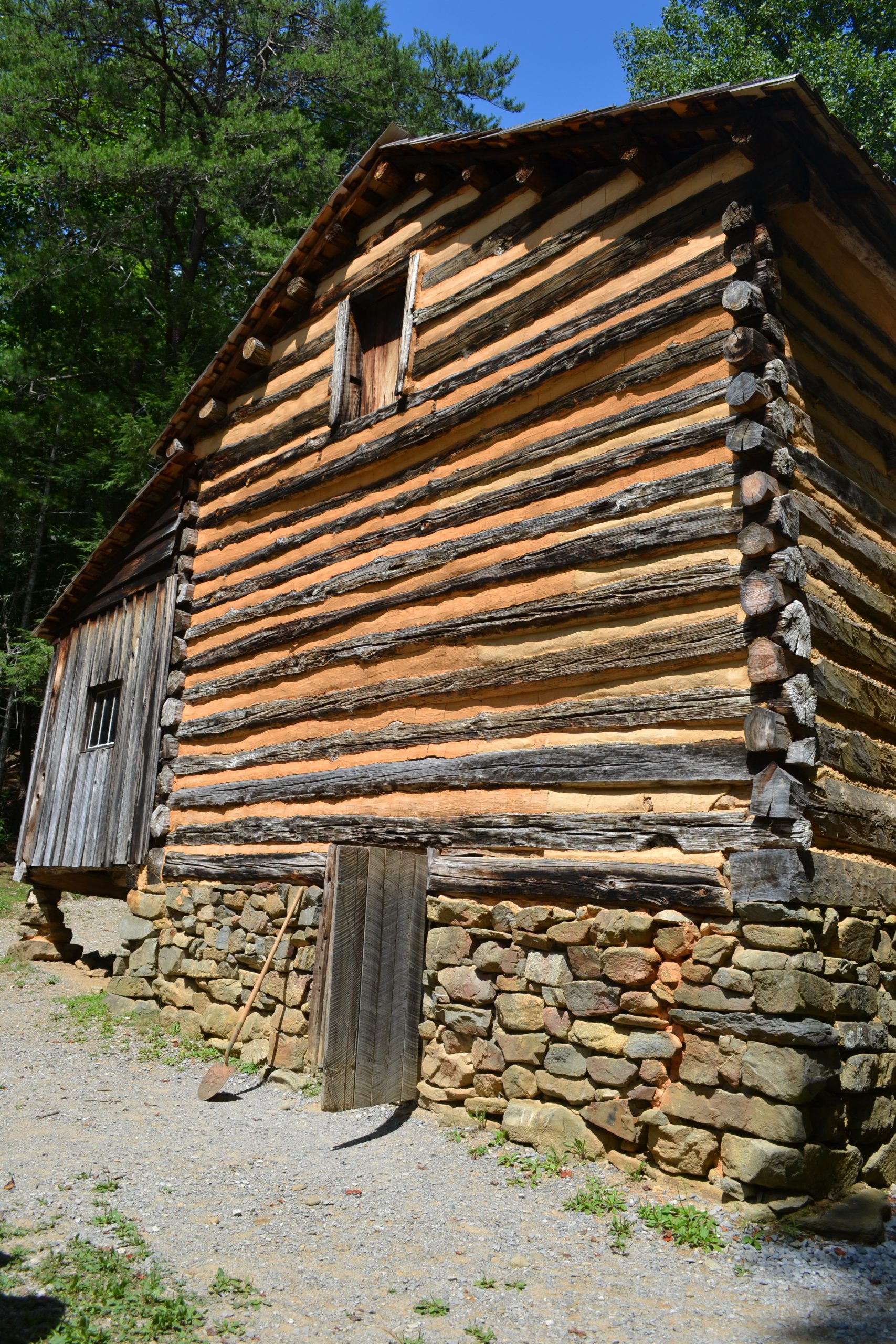
Elijah Oliver left Cade’s Cove during the Civil War but made his home here once he returned. There are several buildings on the property to include the dog-trot style cabin with the detached kitchen, springhouse, smokehouse, corn crib, a chicken coop and a barn. Oliver later added the “stranger room”, an addition to the front porch for overnight guests.
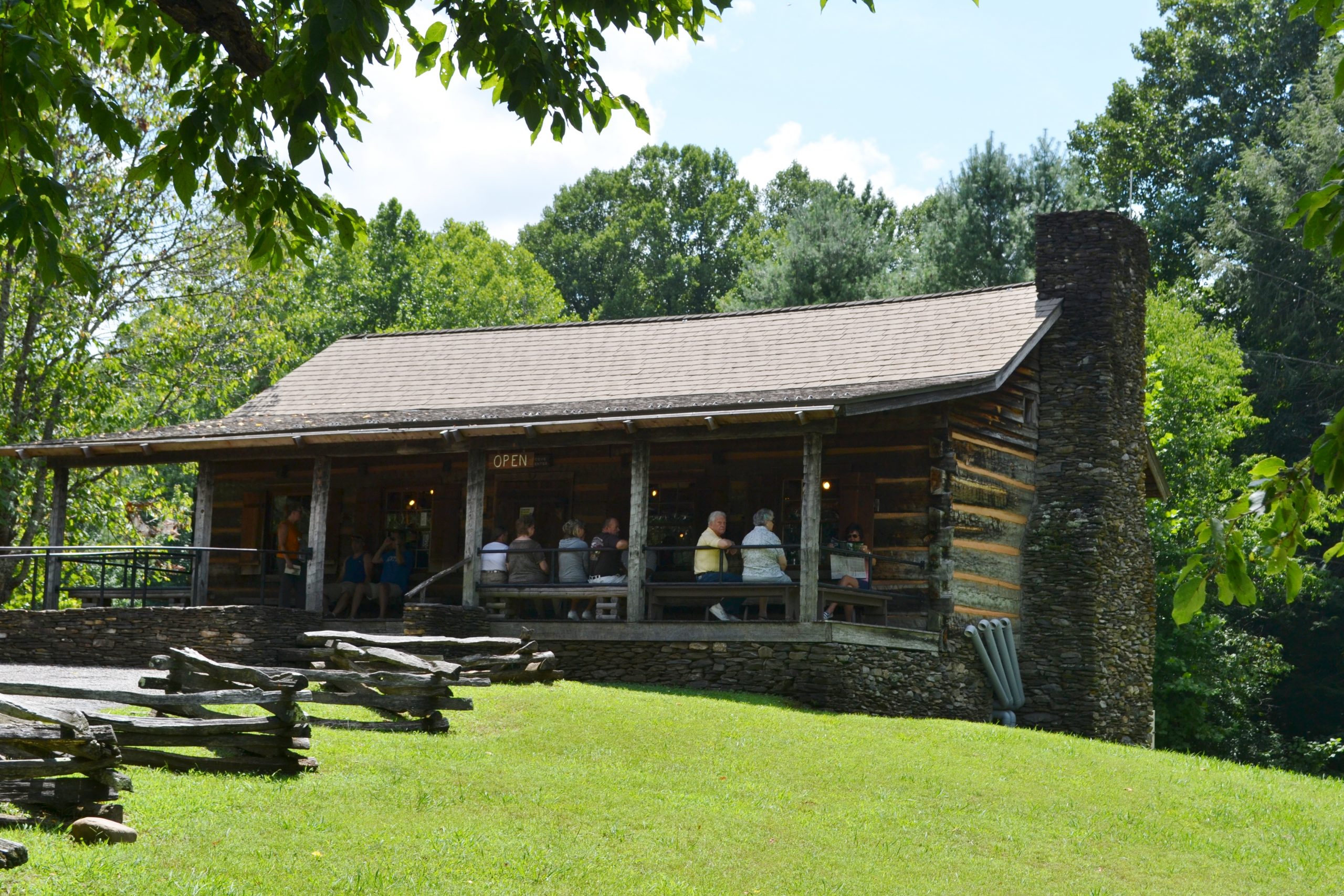
Approximately halfway through the driving tour is the Cable Mill Historic Area & Visitor’s Center, the perfect place to experience the everyday life of the Smoky Mountain settler. Starting out at the center, I pick up additional information about the area and check out a couple of books and guides.
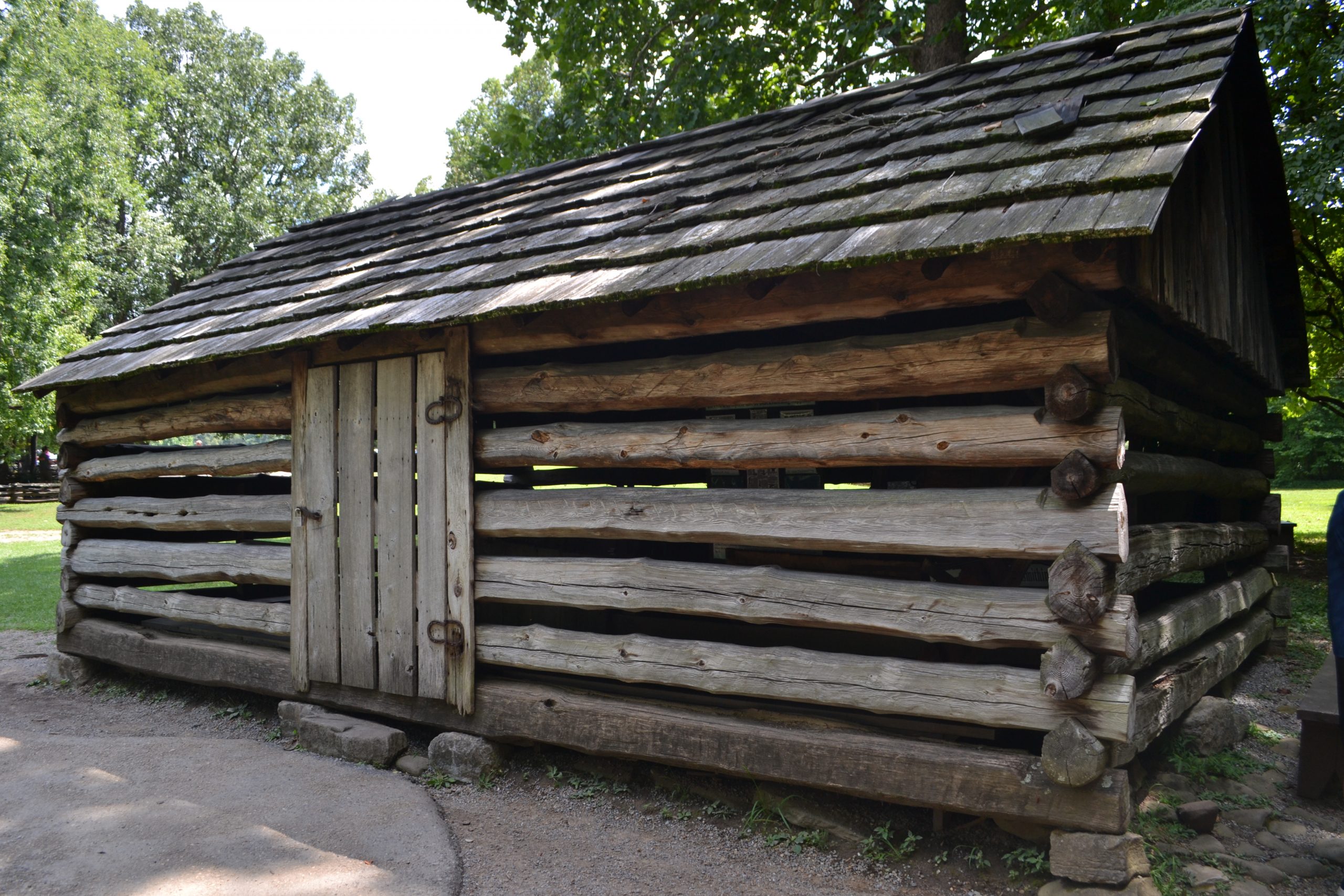
The blacksmith shop was once owned by Tipton Oliver and was brought to this site from another location in the park. The blacksmith held an important position within the community creating farm-related items for the local residents. With the use of hot coals and fire, the iron was shaped into tools, bits, chains and axes.
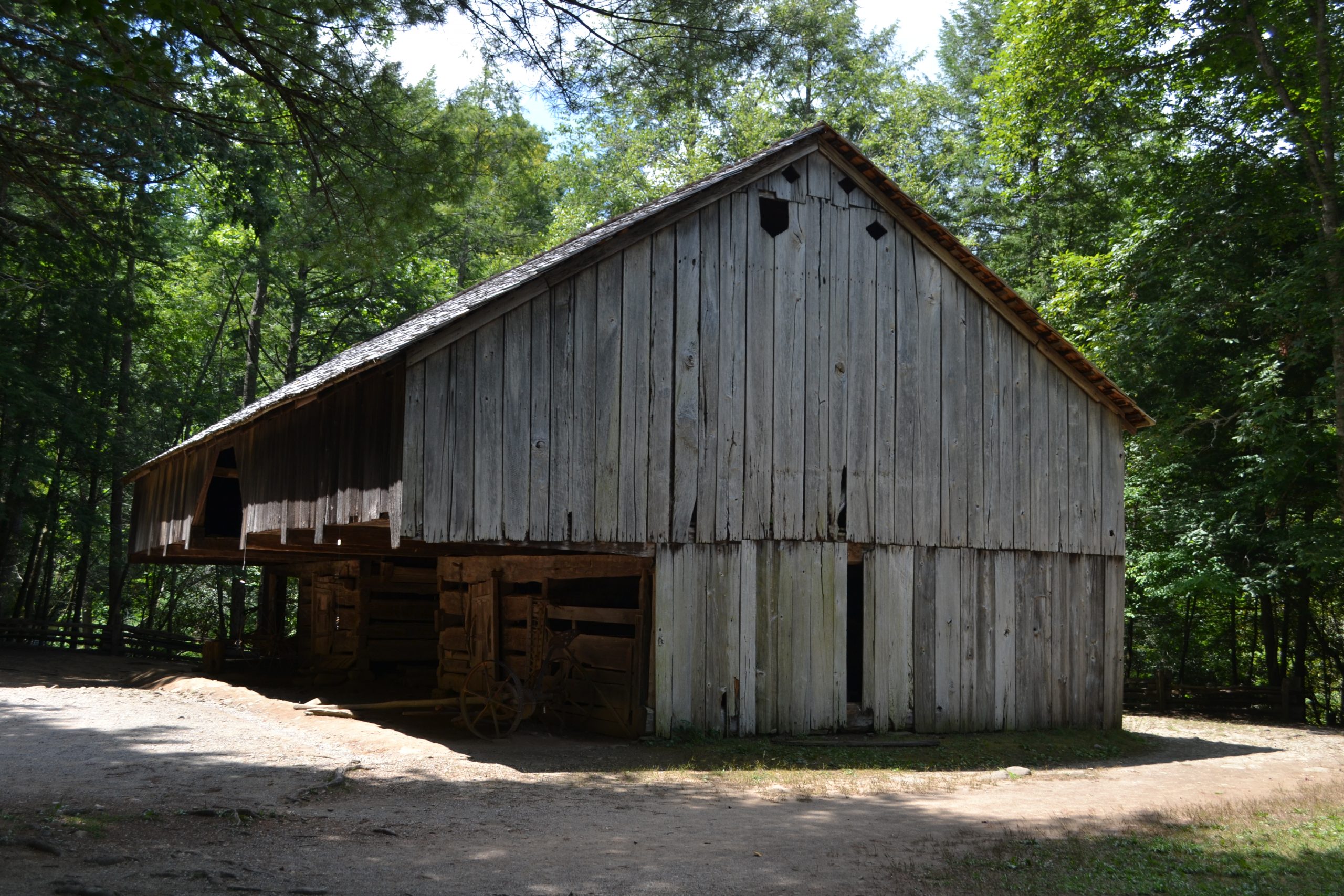
In addition to homes, the barn was one of the most important structures on the frontier because they provided shelter for the animals during the winter season. The cantilever configuration left half of the barn open as storage space for farm equipment and animals, while the opposite end was enclosed.
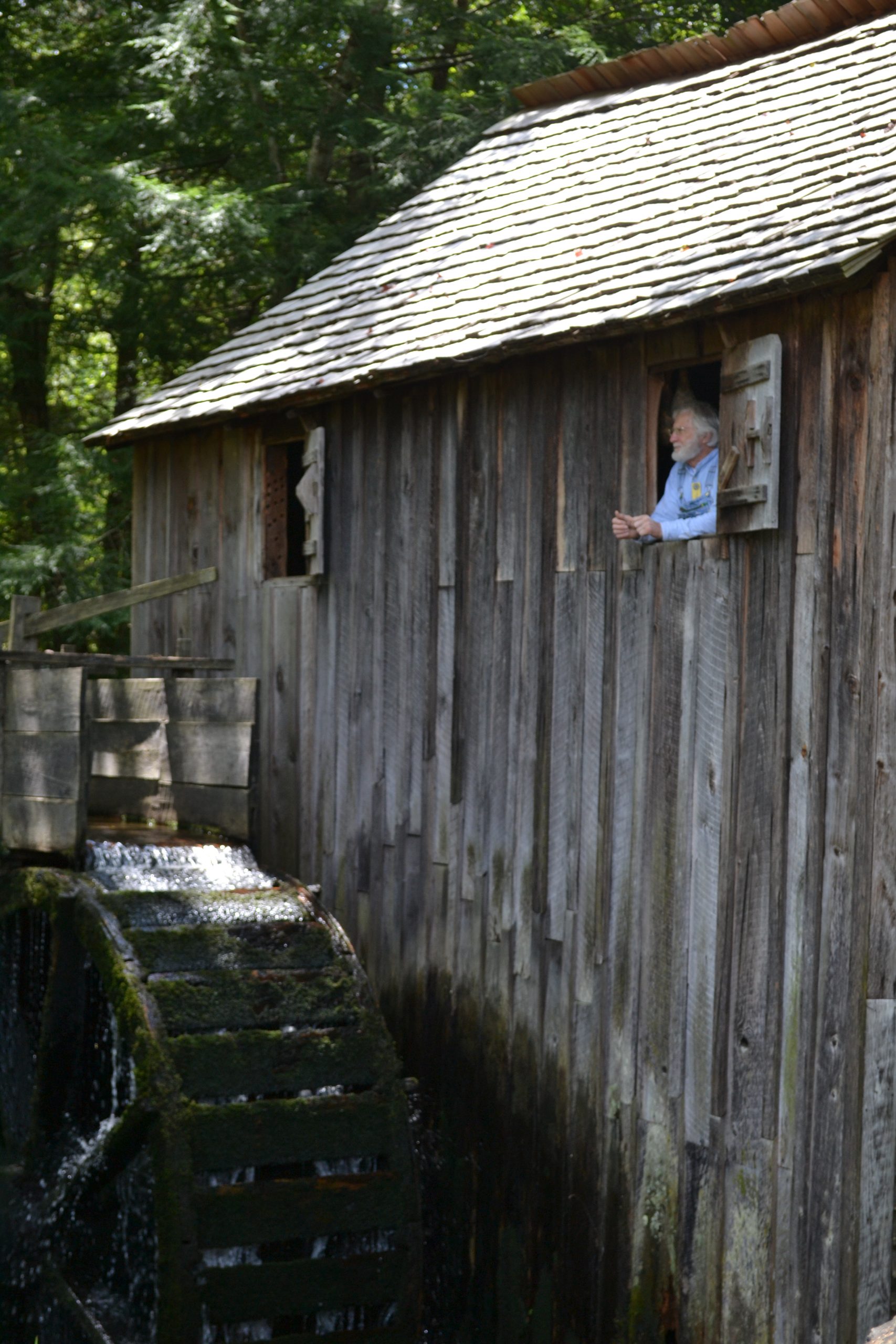
Following the wooden flume along the path, I notice the mill which was once owned by John Cable one of the area’s original settlers who purchased this land in the 1860s. Soon after purchasing the land, he built the water-powered grist mill and sash sawmill around 1870. The grist mill uses circular stones that crush grains to create meal while the sawmill cuts into the logs which were used for building homes. Demonstrations of the grist mill take place here and visitors can purchase a small bag of grain.
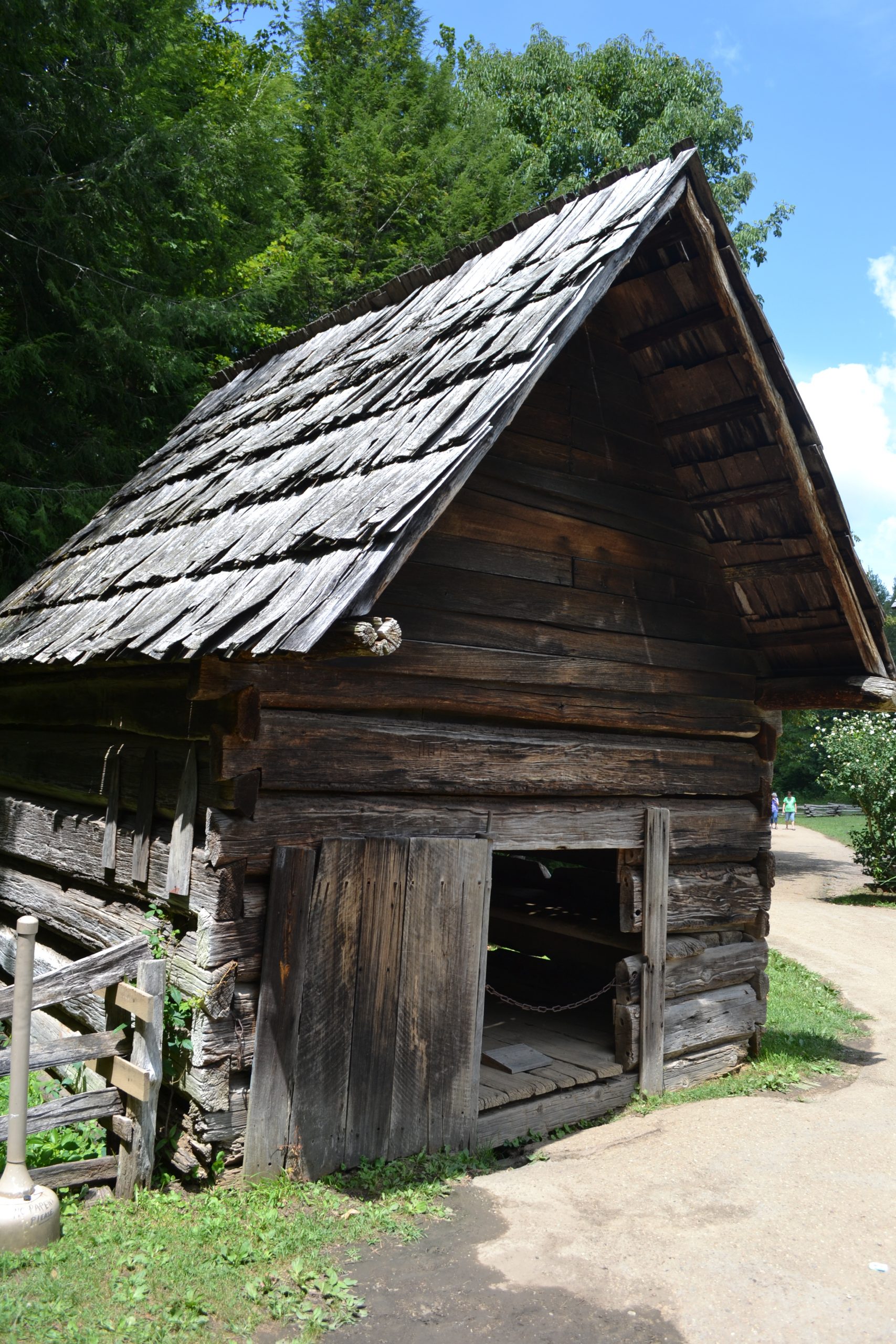
A short distance from the mill, is the smokehouse where the meat from the hogs were cured by using smoke or salt. The meat was stored here until it was time for the next hog was butchered.
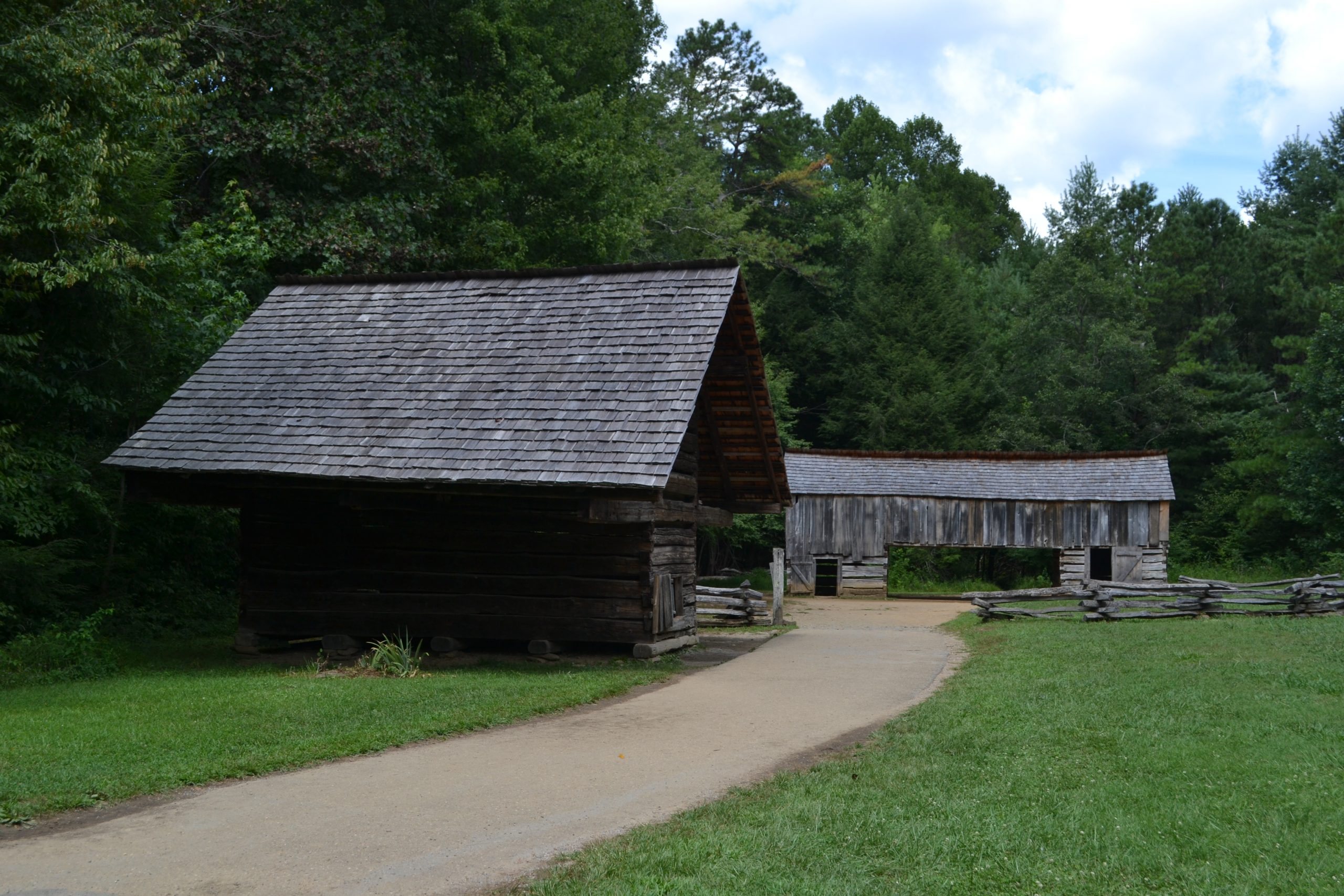
The corn crib was a structure with cracks in between the logs to ensure that the corn would stay dry. Consumed by both animals and man, corn was an important staple for the local residents. They could grind it down to make bread or use it in their stills to produce moonshine.
The bridge-like structure within the distance of the corn crib was actually barn. The load of hay could be brought up to the drive through so that the hay could be unloaded by two men speeding up the process of delivering the load.
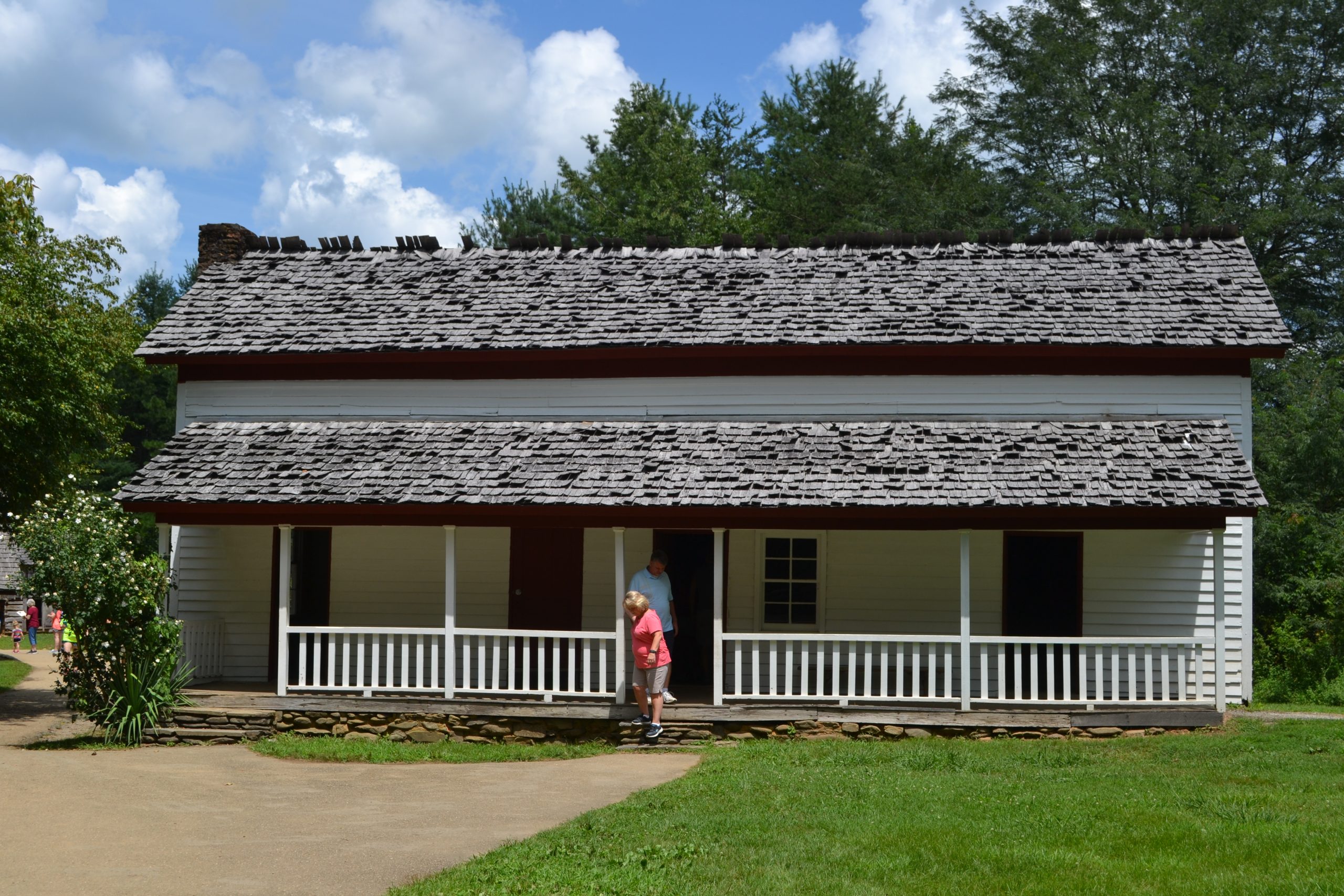
Several important structures sit on land that was parceled out by the state of Tennessee once known as “Kate’s Cove”, named for the wife of Cherokee Chief Abrams.
The Gregg Cable House is known as the first frame house to have been in the area making it one of the greatest landmarks in Cade’s Cove. Many of the homes during this time period were not only homes but places of business as well.
Due to its location on a lush valley, surrounded by mountains, it is a wonderful place to see deer, making it one of the most popular destinations within the park.
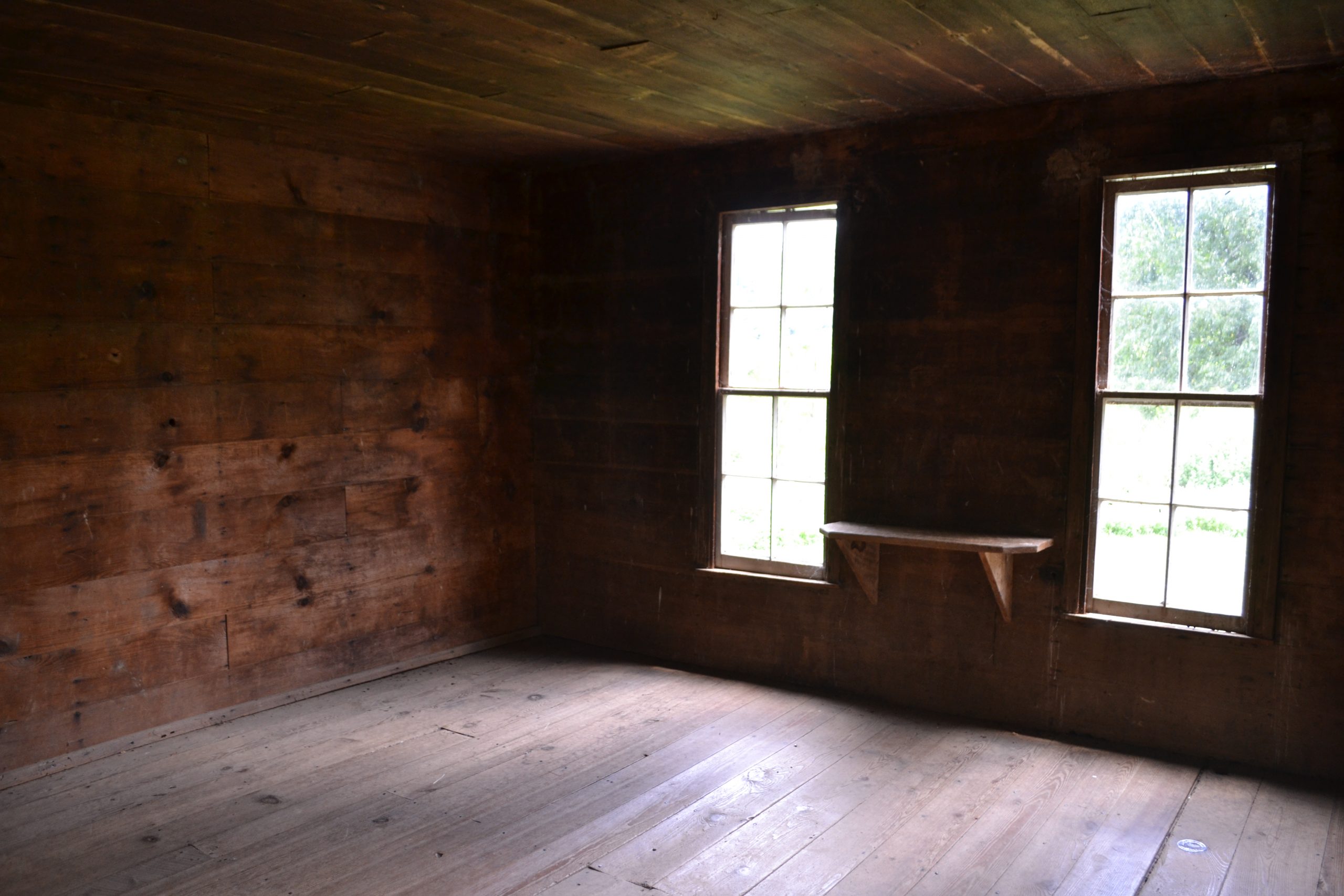
Leeson Gregg built this house in 1879 on land that he had purchased from John P. Cable, who also provided him the lumber. The home included the main open-style living quarters with a fireplace as well as three room upstairs. A porch and kitchen were added later. Looking up at the ceiling, I couldn’t help but notice a couple of bats, which had me running out of the building as soon as possible.
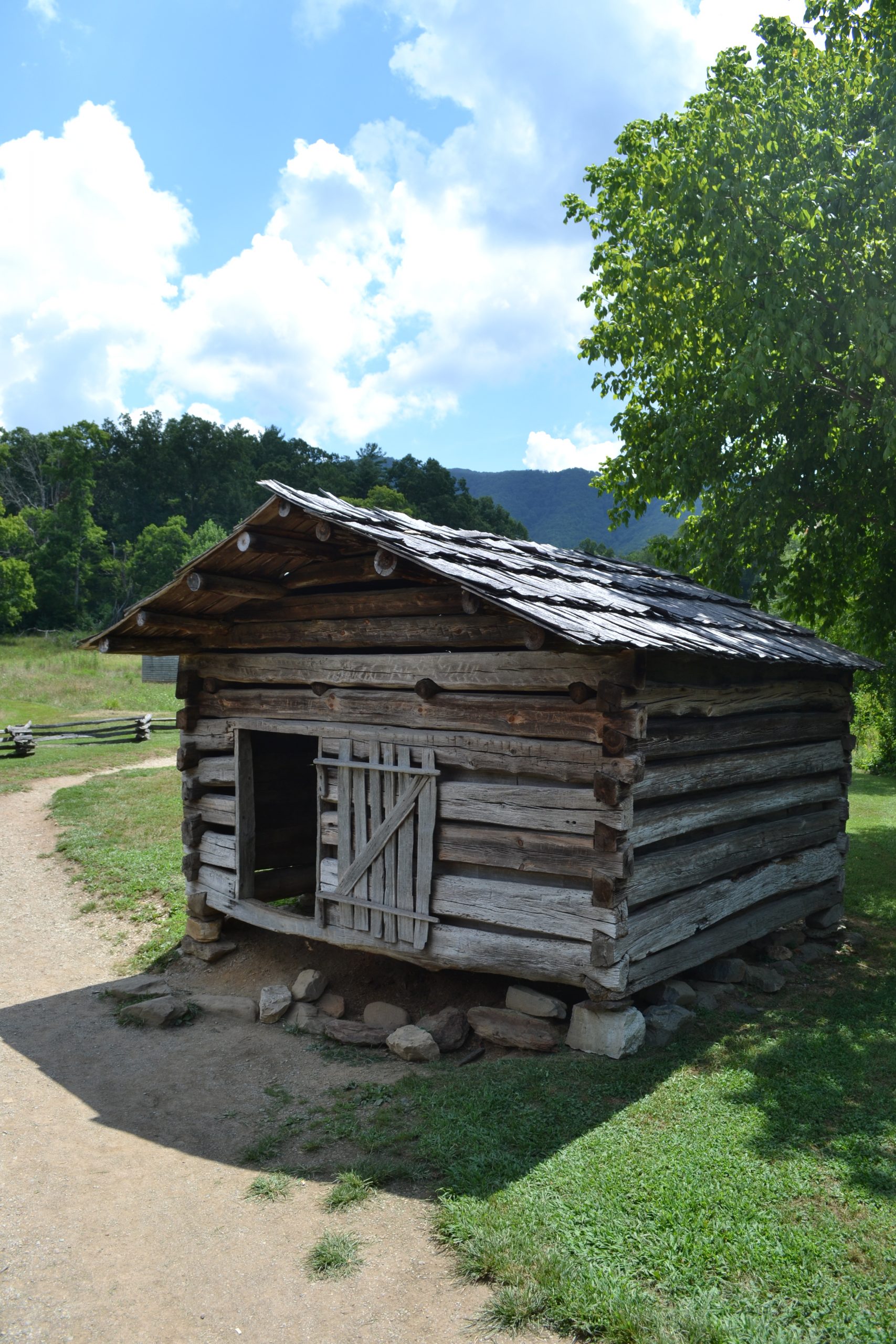
In addition to the Becky Cable House, there are two additional important sites located on this land which includes Don Lawson’s cabin….
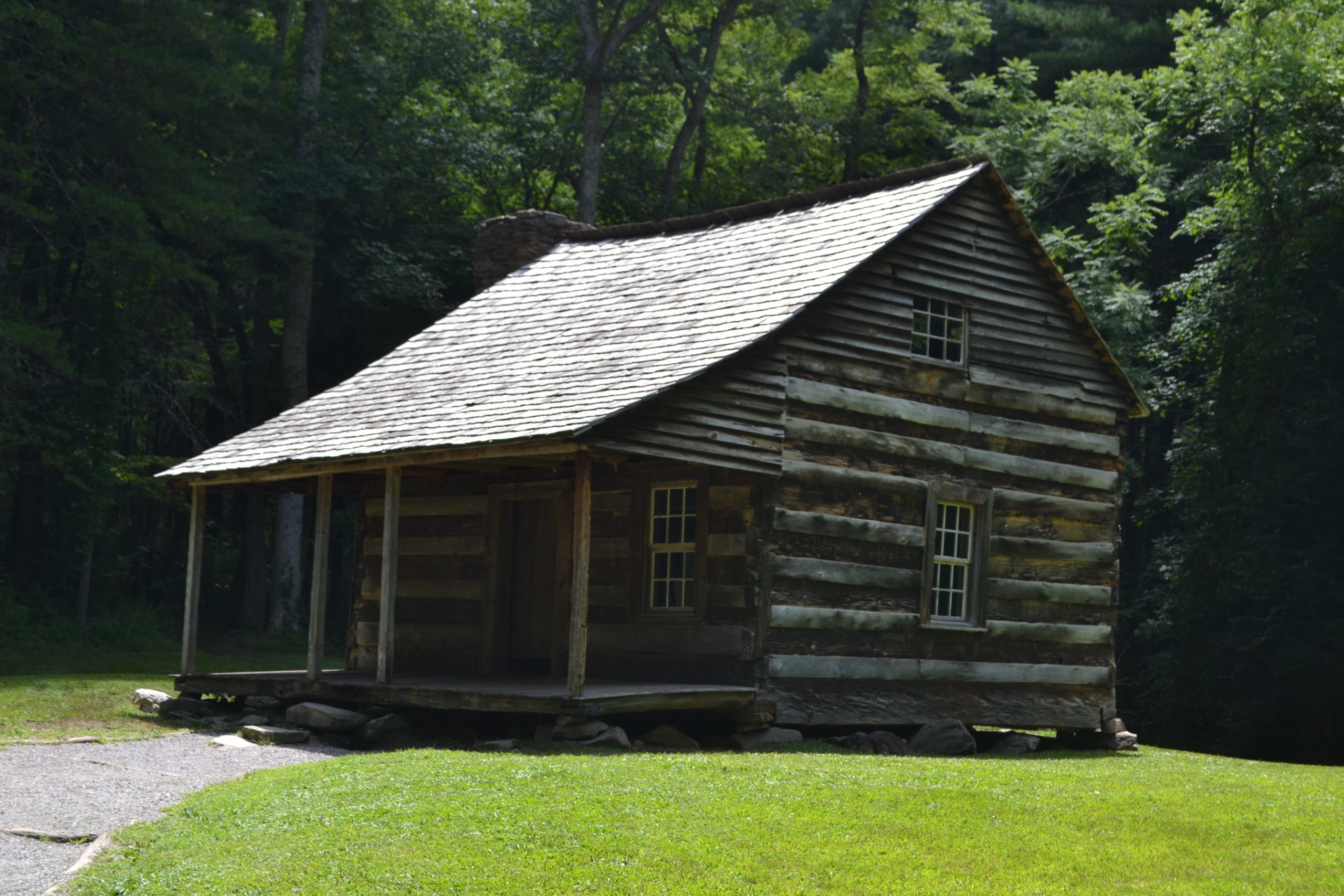
…and the Tipton Cabin.
The “Cove”, once a hunting ground for the Cherokee, is located in a valley surrounded by spectacular mountains and an abundance of wildlife. Living history demonstrations add an added educational aspect from spring through fall. Cade’s Cove is the perfect location for hiking, biking or taking a scenic drive and learning about the history of the Great Smoky Mountains.
Have you visited Cade’s Cove? Did you drive, bike or walk through the park? I would love to hear about your experience if you would kindly leave a message in the comments section below. Many thanks for reading about my adventure at Cade’s Cove and wishing you many Happy Travels!
What to See and What to Do:
Cade’s Cove
Cade’s Cove Loop Road
Great Smoky Mountains National Park, TN 37738
Telephone: 865 436 1200
Where to Stay:
Firefly Chalet
Highway 321 North
Gatlinburg, TN 37738
Website: www.vrbo.com
Where to Eat:
Bennett’s Bar-B-Que
2910 Parkway
Pigeon Forge, TN
Telephone: 865 429 2200
What to Eat:
- Barbecue
What to Read:
- Cade’s Cove, by Nann Wilson
- Cade’s Cove: A Personal History, by William Wayne Oliver
- Cade’s Cove: The Dream of the Smoky Mountain by Rose Houlk